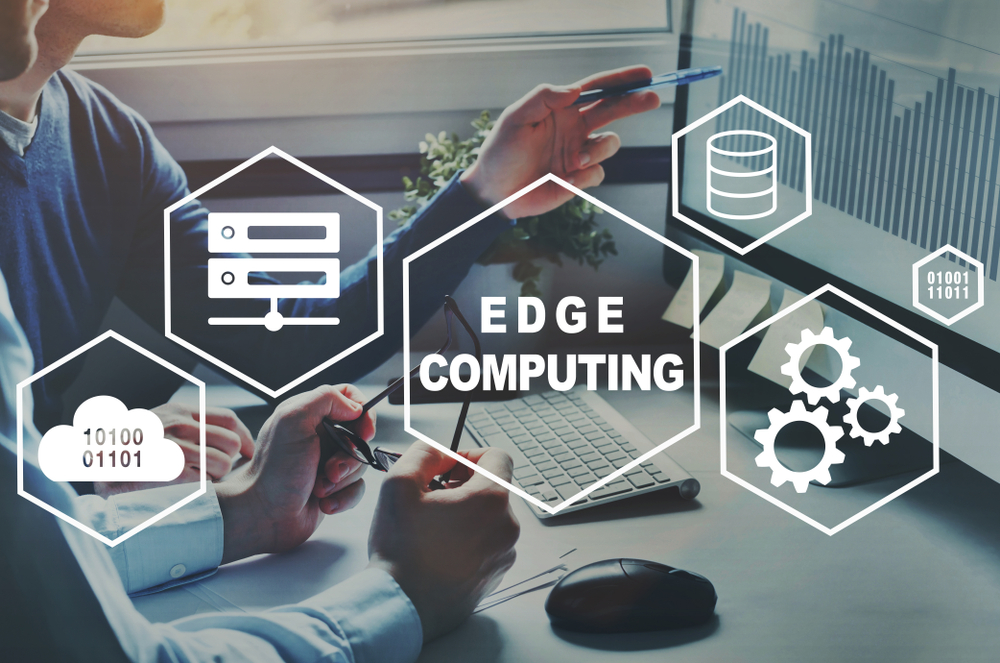ON THIS PAGE
-
Focusing on Key Industry Trends: The 2024 Electronica South China Outlines Top 10 Trending Topics in the Electronics Industry
Press Release
Focusing on Key Industry Trends: The 2024 Electronica South China Outlines Top 10 Trending Topics in the Electronics Industry
Aug 19,2024
As we enter the second half of the year 2024, the global semiconductor market is gradually bottoming out, with the destocking of semiconductor products, the integration of industry patterns, and the recovery of downstream demand driven by AI + consumer electronics. The Mid-Year Total Semiconductor Equipment Forecast recently released by the SEMI estimated that the total sales of global semiconductor equipment will reach USD 109 billion in 2024, a record high value, with a year-on-year increase of 3.4%. Moreover, it is expected to hit a new high of USD 128 billion in 2025.
Against the backdrop of industrial recovery, 2024 electronica South China has outlined the current trending topics in the semiconductor industry and introduced ten keywords. It is hoped that a comprehensive and in-depth industry guide can be provided for professionals in this field through the analysis and outlook.

AI
2024 is known as the first year of the AI+ era. Recently, MiLM, Xiaomi's large language model (LLM), was officially approved for registration, and Apple released Apple Intelligence. Huawei Technologies Co., Ltd. released the Pangu Large Model 5.0, an upgraded version of its LLM, and Microsoft Corporation, an investor in OpenAI, also launched its AI PC product called Copilot PC. A series of new AI-empowered products are expected to take the lead in opening up the consumer market. According to Canalys, a third-party research institution, the global share of AI mobile phones and AI PCs is expected to increase rapidly from 16% and 19% to 54% and 71%, respectively, from 2024 to 2028. The corresponding compound growth rates are estimated to be 63% and 42%. At the same time, the explosion of AI-related demand has also boosted the semiconductor market. However, according to the forecast of the World Semiconductor Trade Statistics (WSTS), the growth of the global semiconductor market in 2024 will be mainly driven by logic chips and memory chips, while the scale of discrete devices, optoelectronic devices, and others will experience a single-digit decline. Confronted with this unfolding structural differentiation pattern, what kind of innovation sensitivity and strategic flexibility should semiconductor enterprises have to grasp the market dynamics of cutting-edge technologies, such as AI?

Data Center
Over the past decade, cloud computing has been a major driving force for the establishment and development of data centers, aiming to provide society with the universal computing power required for digital transformation. However, the explosive growth of AI technologies has brought about huge computing power demands. To meet the training and application reasoning of LLMs, a large number of intelligent computing centers have been built. In response to the challenge of massive data generation posed by AI, we need to figure out how to enhance data center's computing power and data throughput. On the other hand, green and sustainable development also runs through the whole data center development process. Operators and IDC service providers are actively exploring cutting-edge technologies, such as intelligent operation and maintenance, edge computing, and liquid cooling and heat dissipation. The aim is to optimize energy structure and reduce power usage effectiveness (PUE) value to improve the operational efficiency and energy use efficiency of data centers.

New energy storage
In the context of China's pursuit of its dual carbon goals and energy transition, the core of development lies in the capability to control and store energy. Energy storage technology is not only a key technology to solve the fluctuation caused by large-scale integration of wind power and photovoltaic power into the grid, but also an essential technical basis for the development of emerging modes, such as distributed energy and energy Internet. It is also the key to solving the problems of instability of energy supply and energy consumption. Over the past two years, the new energy storage industry has experienced rapid growth, along with quick expansion in installed capacity. According to the statistics of the National Energy Administration (NEA), in 2023, the newly installed capacity of new energy storage will reach 22.6GW/48.7GWh, with a year-on-year increase of more than 260%. By the end of 2023, the cumulative installed capacity of new energy storage in China has reached 31.39GW/66.87GWh, of which lithium battery energy storage products account for 97.4%. Despite the rapid industrial development, some core problems have been exposed. First and foremost is the low installed capacity utilization rate, which was only 34% in practice, well below expectations. Second, cost has always been an important restricting factor for the development of new energy storage. In addition, although lithium-ion batteries currently dominate the energy storage market, other technologies, such as sodium ion, compressed air energy storage, and hydrogen energy storage, are also under active exploration by specialists. The future market direction will still require further technological maturity and market validation. At the same time, the 2024 Carbon Neutrality Innovation Forum - New Energy Storage Technologies and Applications will be held at the 2024 electronica South China venue as one of its supporting programs, aiming to explore the future development trend of the industry.
Wireless Communication
With the continuous increase of terminal demand, the boundaries between the communication industry and various sectors, such as AI, big data, automotive intelligence, and enterprise digital transformation, are getting increasingly blurred. The subtle yet significant role of wireless communication is particularly prominent during the rise of emerging industries. For example, the rapid development of the intelligent vehicle industry has given rise to the demand for technological innovation in onboard communication. Simpler protocols and more optimized wiring are pursued for the goal of cost reduction and efficiency improvement. The rise of the Internet of Vehicles has further promoted the evolution of high-speed and highly reliable wireless communication technology to realize real-time information exchange and coordination, in which the commercialization of Ultra-Reliable Low Latency Communications (URLLC) protocol serves as the key. Additionally, as the number of Internet of Things (IoT) devices continues to expand, there is an increasing demand for wireless chips equipped with machine learning, security, and computing capabilities. According to Zhiyanzhan Industry Research Institute, the market size of China's wireless communication industry will grow by 8%-10% from 2024 to 2030, and reach RMB 500.879 billion in 2030, with a year-on-year increase of 8.07%.

Hardware Security
With further exploration of digital transformation, today's wide application of cloud computing, IoT, edge computing, and 5G technologies poses an increasing demand for hardware security, which brings unprecedented reform and innovation to the current hardware security field. Together, the deep integration of security elements and eSIM technology, the cross-border integration of security microcontrollers (MCU) and microprocessors (MPU), and the increasingly fragmented trusted execution environment (TEE) market have built a diversified and highly complex security ecosystem. The ecosystem not only meets the needs for diversified application scenarios but also stimulates unprecedented vitality for security innovation. At the same time, relevant open-source technologies are also promoting the evolution and innovation of industry standards to a certain extent with higher flexibility and customization, nurturing new opportunities and challenges to the hardware security field. According to the latest forecast of ABI Research, an authoritative market research institution, the market is expected to achieve steady growth of 12% by 2028 and reach a total global shipment of nearly 8 billion units in the next few years.

New Energy Vehicle
The development of new energy vehicles has officially entered a more competitive stage. The competition in vehicles' intelligent level, represented by autonomous driving and intelligent cockpit, has begun. The integration of 5G, big data, and AI technologies will push the value of the industrial chain backward, which may subvert the original business model seen in the traditional automobile industry. Thanks to the continuous breakthroughs in autonomous driving technology and increasingly rich intelligent cockpit experience, vehicles will gradually upgrade from travel tools to the "third space" of life. Driven by both policy support and market demand, the installation rate of assisted driving functions of L2 (semi-autonomous driving) and above new energy passenger vehicles in China has reached 55.3% in 2023 and further increased to 62.5% from January to February this year. The low-level intelligent driving functions are basically the standard configuration of domestic models, while the high-level ones are equipped on almost 80% of the models of new vehicle enterprises. With the implementation of the pilot program for the on-road testing of L3 (conditional driving automation) vehicles in China, data-driven intelligent connected vehicles continue to evolve and are becoming the focus of enterprise competition. At the same time, the 2024 New Energy Vehicles Three Electric Technology Summit Forum will continue to be held at the 2024 electronica South China venue to share cutting-edge technological achievements, discuss opportunities and challenges faced by the industry, and seek common prosperity and development of the industry.

Third-generation Semiconductor
The third-generation semiconductor is the focus of global semiconductor technology research and new industrial competition. In recent years, driven by the demand for new energy vehicles, photovoltaics, and energy storage, the third-generation semiconductor industry has maintained rapid development. According to TrendForce, SiC, as an important development direction of future power electronic technology, still shows a trend of accelerated penetration in application markets that truly emphasize power density and efficiency, such as automobiles and renewable energy, despite the initial impact of the obvious slowdown in the growth of BEV sales on its supply chain. Besides, the overall market demand will maintain a growing trend in the next few years. It is estimated that by 2028, the global market size of SiC power devices will rise to USD 9.17 billion. On the other hand, the development of the GaN power component market is mainly driven by consumer electronics, and the core still lies in fast chargers. Other consumer electronics scenarios include Class D audio, wireless charging, etc. TrendForce estimated that the global market size of GaN power components will grow from USD 180 million in 2022 to USD 1.33 billion in 2026, with a compound growth rate of 65%. At the same time, the 2024 Third-Generation Semiconductor Technology and Application Forum will continue to be held at the 2024 electronica South China venue to explore the future development of third-generation semiconductors.

Edge Computing
In recent years, the rapid development and application of AI technology have led to the comprehensive outbreak and reconstruction of generative AI represented by LLMs. Against this backdrop, the operation of LLMs has put forward higher requirements for computing power, data processing, and storage. At the same time, the scale of interconnected devices has increased sharply, with massive data generated at the edge of the network. Therefore, the next step of evolution is to extend computing power from cloud training to the edge, realizing real-time processing and analysis of data. According to STL Partners' key statistics on edge computing, the potential market size of global edge computing will reach USD 445 billion by 2030, with a 10-year compound growth rate of 48%. In addition, a report by EO Intelligence shows that China's edge computing market will reach RMB 198.768 billion by 2025, with great development potential.

Industrial Internet
By adopting the network infrastructure of the industrial Internet with low latency, high reliability, and wide coverage, we can enable the seamless transmission of data in the whole industrial system and industry chain. This makes all links, such as design and R&D, remote operation, and equipment collaboration deeply interconnected, and forms a production mode of real-time perception and intelligent interaction. Recently, the China Academy of Information and Communications Technology (CAICT) released the Evaluation Report on Development Effectiveness of Industrial Internet in China (2024), which shows that the domestic industrial Internet industry has entered a period of rapid growth with comprehensive promotion, and will subsequently usher in a new stage of scale development. In recent years, the widespread deployment of 5G networks has also served as a new growth driver for the industrial Internet. With the technical characteristics of high speed, low latency, and wide connection, 5G can effectively solve the problems of industrial wired technology, such as poor mobility, inflexible networking, and difficult laying in special environments. The limitations of existing industrial wireless technology in reliability, connection density, transmission capacity, and other aspects can thus be extended to effectively meet the needs of large-scale data collection and perception, precise manipulation, remote control, and other industrial production, thus continuously improving the basic network capabilities of the industrial Internet and expanding the integration and innovation of industrial Internet. At present, there are 8,000 5G + industrial Internet projects in China, covering all 41 major industrial categories. The application of 5G in the industrial field accounts for more than 60%.

IoT
Global digital transformation is accelerating. Survey data show that the market size of China's AloT industry is expected to reach RMB 1.7 trillion in 2024, with a growth rate of 17%. AIoT has become an important engine driving the development of the digital economy. At present, the IoT industry will also enter a new stage of development. This stage will be application-oriented with greater emphasis on the actual application effect and user experience. At the same time, the industry will delve deeper into the development of core IoT technologies. For example, the size of IoT devices is getting smaller, thanks to the development of chip technology. Their functions will grow more powerful, with effective reduction in the energy consumption and cost of equipment. In addition, the continuous development of cloud computing, big data, AI, and other technologies will add to the intelligence, automation, and security of software technology. Based on that, more reliable technical support for the IoT industry will be provided so that IoT devices can better realize data collection, transmission, processing, and application while protecting users' data security and privacy.

The electronica South China will be held at the Shenzhen World Exhibition & Convention Center (Bao'an New Hall) from October 14 to 16, 2024. This year's event will focus on popular technologies and applications, such as AI, data centers, new energy storage, wireless communication, hardware security, new energy vehicles, third-generation semiconductors, edge computing, industrial Internet, and the IoT. It will bring together well-known enterprises at home and abroad and attract high-quality buyers and elites in the industry, thus creating more business opportunities for the booming electronics industry market in South China and contributing to economic recovery.
electronica South China 2024
Click to learn more electronica South China 2024 information.



